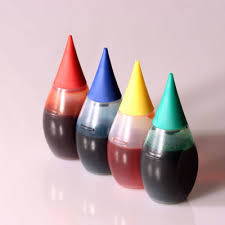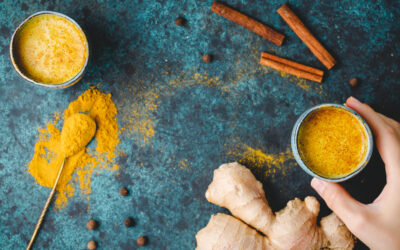Food dyes have been with us in America since the turn of the 20th century. Chemists found out how to synthesize beautiful blues and ravishing reds from coal tar, and later from petroleum, to make certain foods look more appealing.

In Roman civilization people used saffron, beets, flowers, carrots and other natural products to color food. Dyes used in American foods today are mostly made from oil or synthetic materials.
That’s right, that tasty little snack you and your kid just shared is partly made from the same stuff gasoline is made from. Think that strawberry milkshake from a certain popular fast food chain gets its pretty pink hue from strawberries? Nope, that’s Red #40. But you don’t go to fast food chains, “Haha, medical blog! Me and my fam don’t eat fast food, we just had macaroni and cheese with yogurt and a pickle!” Sorry, all are known to have food dyes. Though some companies are moving towards using natural coloring like turmeric and paprika due to the reputation dyes have developed.

Thousands of foods use food dyes, they can be found in cereals, candy, snacks, beverages, vitamins, pickles, salad dressings, boxed foods, chips, and even cosmetics and health products like tooth paste use dyes.
Before we get into some of the hard science findings, think about this before you start taking dyes to lightly. There were originally around 80 different dyes being used in foods, soaps, and cosmetics, between 1906 and 1938 fifteen of those were eliminated due to recurrent adverse health effects. Today only 7 are allowed by the FDA. And as you’ll see, some of these clinical findings are alarming and makes you wonder why 7 are even allowed. Furthermore, many countries have banned or require warnings on products due to the known effects of these dyes.
So what is the extent of damage these food dyes can do? A 2012 meta-analysis showed food dyes as being linked to hyperactivity and attention deficit disorder in children. And multiple studies indicate the same results. Food dye and it’s effects on children are definitely a serious issue, but I was curious about the big serious “C” word. Cancer. As it turns out there’s quite a bit of research on food dyes and cancer.
In 2010 the Center for Science in the Public Interest (CSPI) concluded the FDA approved dyes are likely carcinogenic, are inadequately tested for, and cause behavioral problems in children (And in my opinion, probably in adult children too). in their report Food Dyes: A Rainbow of Risks which you can read here. For those of you that prefer not to read a 40 page scientific article I’ll summarize. To be purely objective, it seems some food dyes are at the moment more cancerous than others. They found the dye Red 40, the most commonly used dye, may speed up immune system tumors in mice. Yellow 5 was not found to directly cause cancer, but the authors state the testing wasn’t adequate. They did find it may trigger behavioral problems in children. Yellow 6 was found to cause adrenal tumors in animals. Red 40, Yellow 5, and Yellow 6 account for around 90% of dyes used in food. Blue 2 caused brain tumors, Green 3 increased bladder and testicular tumors in rats. Some of them were not found to cause any cancers, but the researchers point out there’s limited testing done on dyes.
It seems there’s some evidence that dyes may cause cancer. And even though there’s not an abundance of peer-reviewd, large clinical human trials, that show it does, why would we need them if there is some evidence it may and there are safer options. Some, if not most, of the evidence on dyes and health is considered anecdotal.
An issue with studies done on dyes is almost all of the toxicological studies on dyes were commissioned, conducted, and analyzed by the chemical industry and academic consultants. These studies need to be done by independent researchers to so as to avoid any bias. Another issue is testing usually involves one dye, where as many foods combine multiple dyes which may have a synergistic effect.
One good way to avoid food dyes is to learn to red the label. While it’s vital to study the macro nutrients of a food label, the carbohydrates, sugars, protein, ect…, it’s also important to check for any additional ingredients and preservatives. Or just don’t buy anything that needs to have a label on it. If it has enough extra stuff added to it that it requires a label to list them it’s likely not the whole food option you want.

Dyes found on a food label.
What do you think about dyes being used in food and cosmetics? Have you had any experience removing dyes from you or your families diet? Know any cool research on dyes and health you want to share? Let us know!
By Travis Whitney, NMD, MSc
References
Kobylewski, S. and Jacobson, M. Food Dyes: A Rainbow of Risks. Center for Science in the Public Interest. 2010. https://cspinet.org/new/pdf/food-dyes-rainbow-of-risks.pdf
Potera, C. DIET AND NUTRITION: The Artificial Food Dye Blues. Environ Health Perspect. 2010 Oct; 118(10): A428. https://www.ncbi.nlm.nih.gov/pmc/articles/PMC2957945/
Hennessey, R. Living in Color: The Potential Dangers of Artificial Dyes. 2012. https://www.forbes.com/sites/rachelhennessey/2012/08/27/living-in-color-the-potential-dangers-of-artificial-dyes/#236be0443213
Borrell, B. Where Does Blue Food Dye Come From. Scientific American. 2009. https://www.scientificamerican.com/article/where-does-blue-food-dye/




